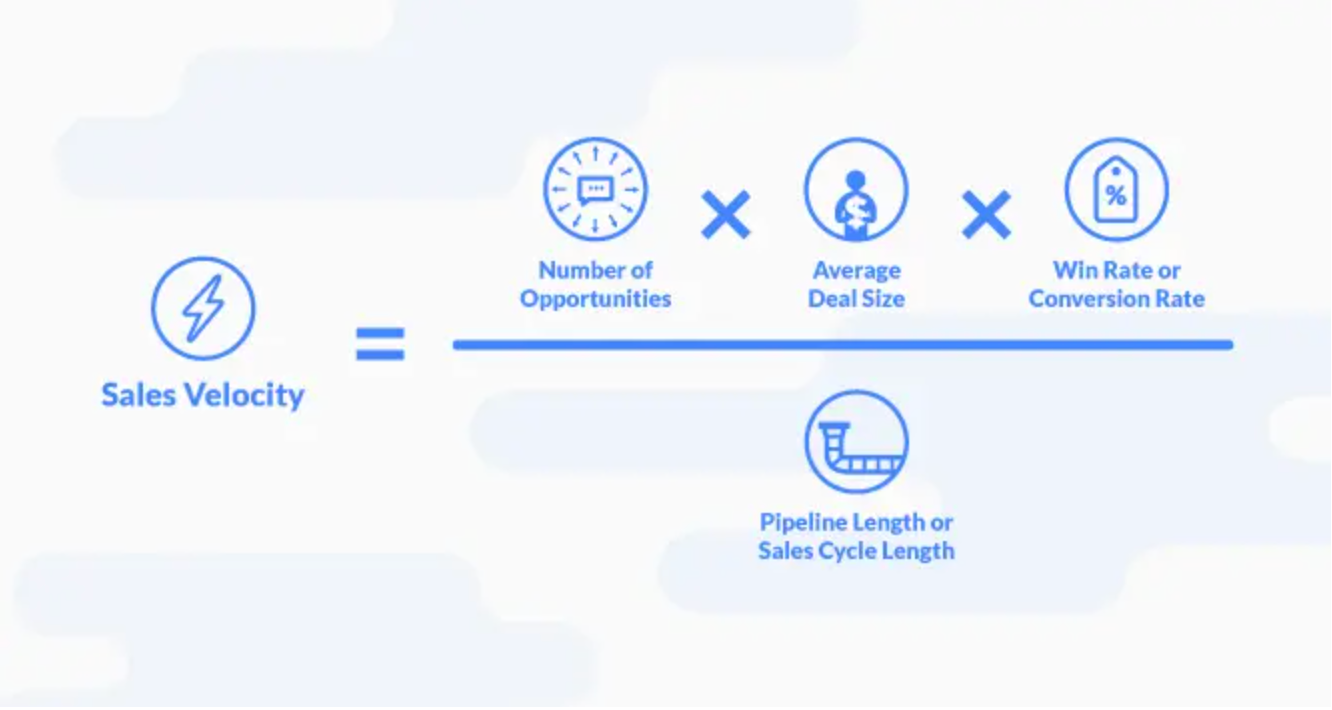Sales Velocity Calculator
We coach you to focus on the most important factor in selling - the people. The ones who work for you and the ones you are trying to win business with. In our opinion, it's what you do when you are with a person that matters most. And it's a growing view that we are using the wrong metrics to forecast success. This is where sales velocity comes in.
The more quickly you can convert leads into customers, the more successful your business will be. But, the sales metric that reveals the most about both time and money, is often misunderstood or ignored.
Use Sales Velocity for Faster Growth
If you just focus on keeping your pipeline full, you’ll have tons of leads but not enough resources to move them through the pipeline, negotiate high-value deals, or convert prospects into customers. You won't win enough.
We have created sales velocity calculators based on what you'd want to measure depending on your role, click on the button to go to that calculator, or check out all three.
Start measuring sales velocity, to obtain the data and insights necessary to optimise your sales process from prospect to contract. i.e. your win rate.
What is Sales Velocity?
Sales velocity is a measurement of how fast you’re making money. It looks at how quickly leads are moving through your pipeline and how much value new customers provide over a given period.
Calculate your Sales Velocity number, for Sales Leaders, CROs:
If you are a Sales Leader, you need to measure the performance of your sales team. This calculator measures some key inputs and gives you a 'per day' sales output number. With this, you can benchmark where you need to be on any given day in the year. Visit this page whenever you need to check your process.
Why is it so Important to Track Sales Velocity?
Sales velocity plays a huge role in your business’ ability to thrive and grow. The less time it takes for prospects to move through your pipeline, the faster you can close more deals. So, a higher sales velocity means you’re bringing in more revenue in less time. Tracking sales velocity over time allows you to benchmark your own sales velocity against other teams, compare the effectiveness of individual reps or regions, and see how changes to the sales processes impact your business, for better or worse. Understanding sales velocity can also help you forecast more accurately and determine how your sales process can be optimised for faster sales and higher conversion rates at each stage.
Calculate your Sales Velocity number - For CFOs:
If you are a Chief Finance Officer, you'll likely want to measure overall costs of your sales team. This calculator measures some key inputs and gives you a 'effort wastage' number. With this, you can understand sales efficiency and effectiveness. Visit this page whenever you need to check your process.
The Sales Velocity Formula
Figuring out your sales velocity requires taking a good look at your pipeline, sales cycle, lead nurturing processes, and average deal size.
The sales velocity formula requires the following pieces of data:
- Number of opportunities in your pipeline
- Dollar value of your average deal size
- Customer conversion rate as a percentage of wins vs. losses
- Average sales cycle in number of days
Calculate your sales velocity by multiplying the number of opportunities in your pipeline by dollar value of your average deal size and your win rate. Divide the result by the number of days in your typical sales cycle.
Let’s say your business has 50 opportunities, an average win rate of 25%, an average deal size of $10,000, and a sales cycle that typically lasts 60 days. Here’s how you could use the formula to determine sales velocity:
Sales velocity = (50 * .25 * $10,000) / 60
= $125,000 / 60
= $2083.33
This tells us that your sales velocity is $2083.33, which means you’re bringing in roughly that much revenue each day. Knowing this, you can either strive to increase the numerator (in this case, $125,000) or decrease the denominator (60 days)—or both, if possible.
That said, a one-off calculation doesn’t actually reveal much about the health of your business. To get the full picture, you need to put these numbers into context. The true value comes from consistently tracking sales velocity at regular intervals and using it to compare the effects of changes in your sales process.
Calculate your Sales Velocity number - for CHROs:
If you are an HR Officer, you'll likely want to measure overall costs of poor retention on your sales team. This calculator measures some key inputs (there are many) and gives you an approximate 'unsuccessful hire' overall cost. With this, you can calculate the probable real cost of a failed hire, poor onboarding, lack of support etc. Visit this page whenever you need to check your numbers.
A useful LinkedIn article on what to consider can be found here: linkedin.com/pulse/true-cost-hiring-wrong-salespeople-rory-capon/
Contact us to get help with your Sales Velocity calculation, to know what to do differently to improve it or on any of the points discussed.
Blog article extracts reproduced from Adobe: https://business.adobe.com/blog/basics/sales-velocity-the-critical-sales-metric-your-team-probably-isnt-measuring
